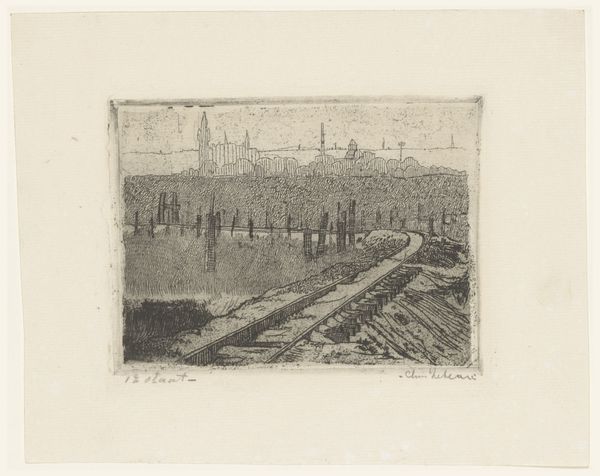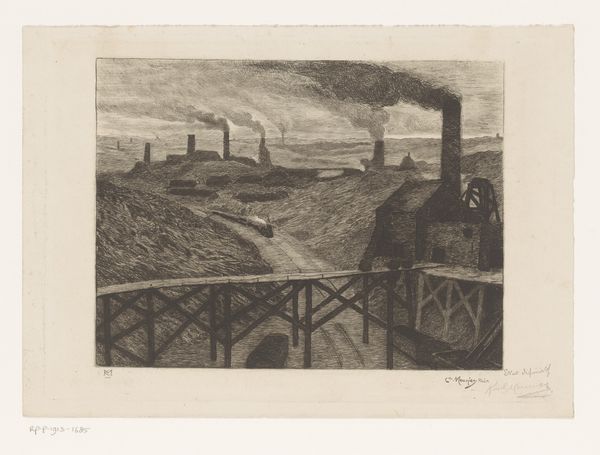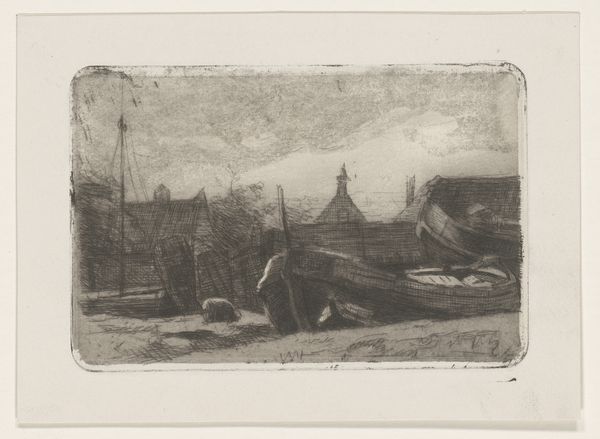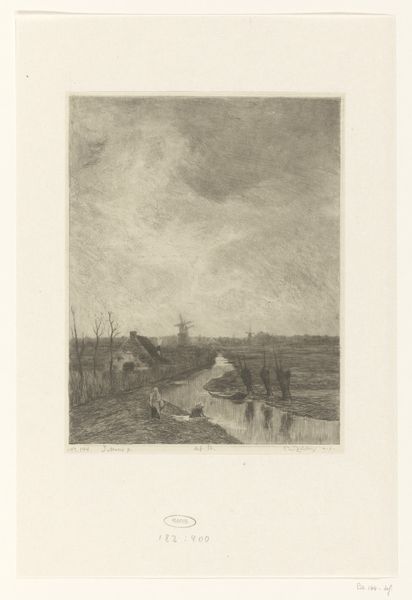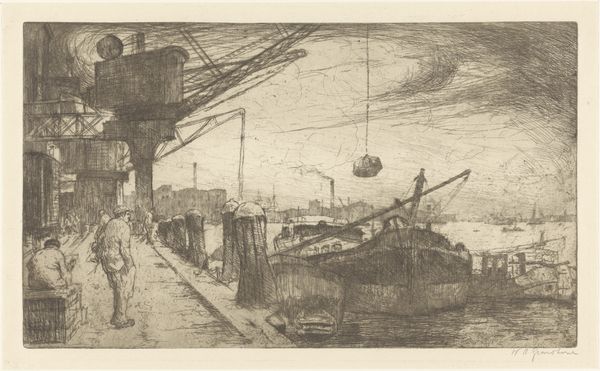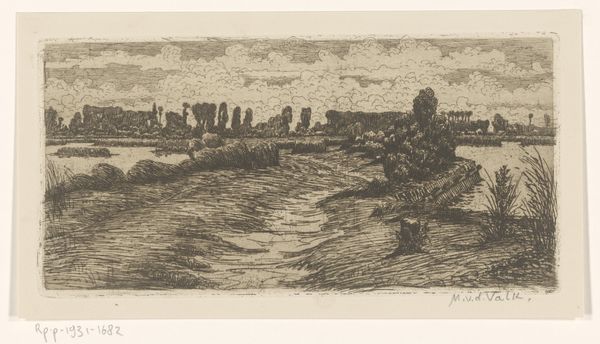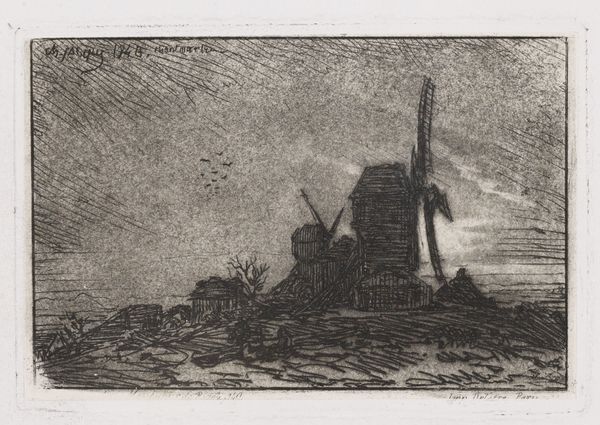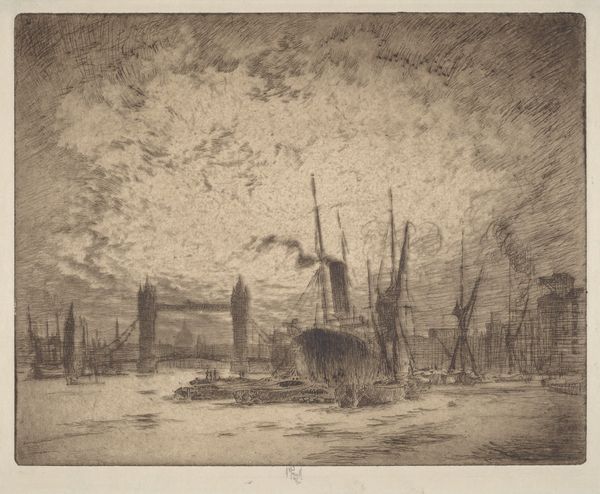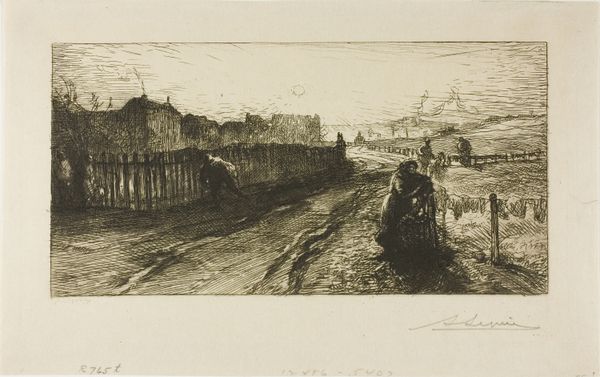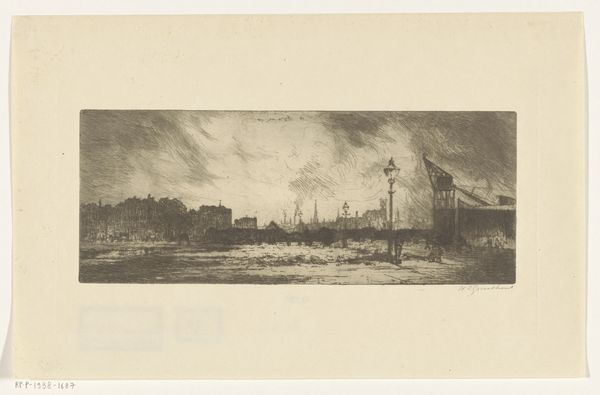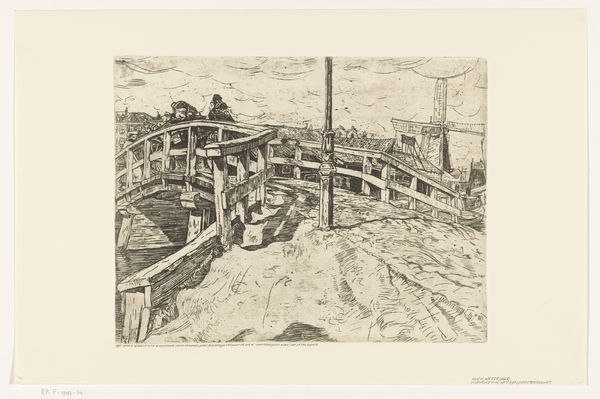
#
pencil drawn
#
photo of handprinted image
#
aged paper
#
light pencil work
#
photo restoration
#
wedding photography
#
pencil sketch
#
light coloured
#
old engraving style
#
ink colored
Dimensions: height 441 mm, width 585 mm
Copyright: Rijks Museum: Open Domain
Editor: So, here we have Arend Hendriks’ "Haven," created sometime between 1911 and 1938. It's currently held at the Rijksmuseum. The intricate detail of the drawing, particularly in rendering the texture of the material in the foreground, is mesmerizing. What do you see when you look at it? Curator: For me, this work really speaks to the means of production. Look at the repetitive mark-making; it’s incredibly labour-intensive. The drawing itself almost becomes a form of manual labor, mirroring the activity potentially depicted on the shore. What do you make of those repetitive shapes on the shore? Editor: They almost look like piles of nets or even cloths laid out to dry, suggesting some kind of fishing or textile industry? Curator: Precisely! This isn't just about depicting a 'picturesque' harbor scene; it's a material document. We can ask, what kind of work was done here, and who was doing it? The aged paper itself adds another layer, reminding us of the history embedded in the materials themselves. It prompts us to think about value, labor, and how art participates in economic activity. The traditional technique clashes with modern sensibilities around speed and consumption. Editor: It definitely pushes back against a romanticized view of the harbor; the grit and work are very much present. It feels grounded in reality. Curator: Right! Instead of thinking only about individual artistic genius, it directs our gaze to the collective labor, the hands that harvested and made. That pier becomes less about perspective, and more about the infrastructure that enables that labour. I wonder how readily the average viewer will appreciate those historical elements? Editor: Seeing it as a product of labor, instead of simply an aesthetic object, gives it a new dimension for me. It's much more profound than a pretty picture. Curator: Agreed. It challenges us to consider the full picture.
Comments
No comments
Be the first to comment and join the conversation on the ultimate creative platform.
